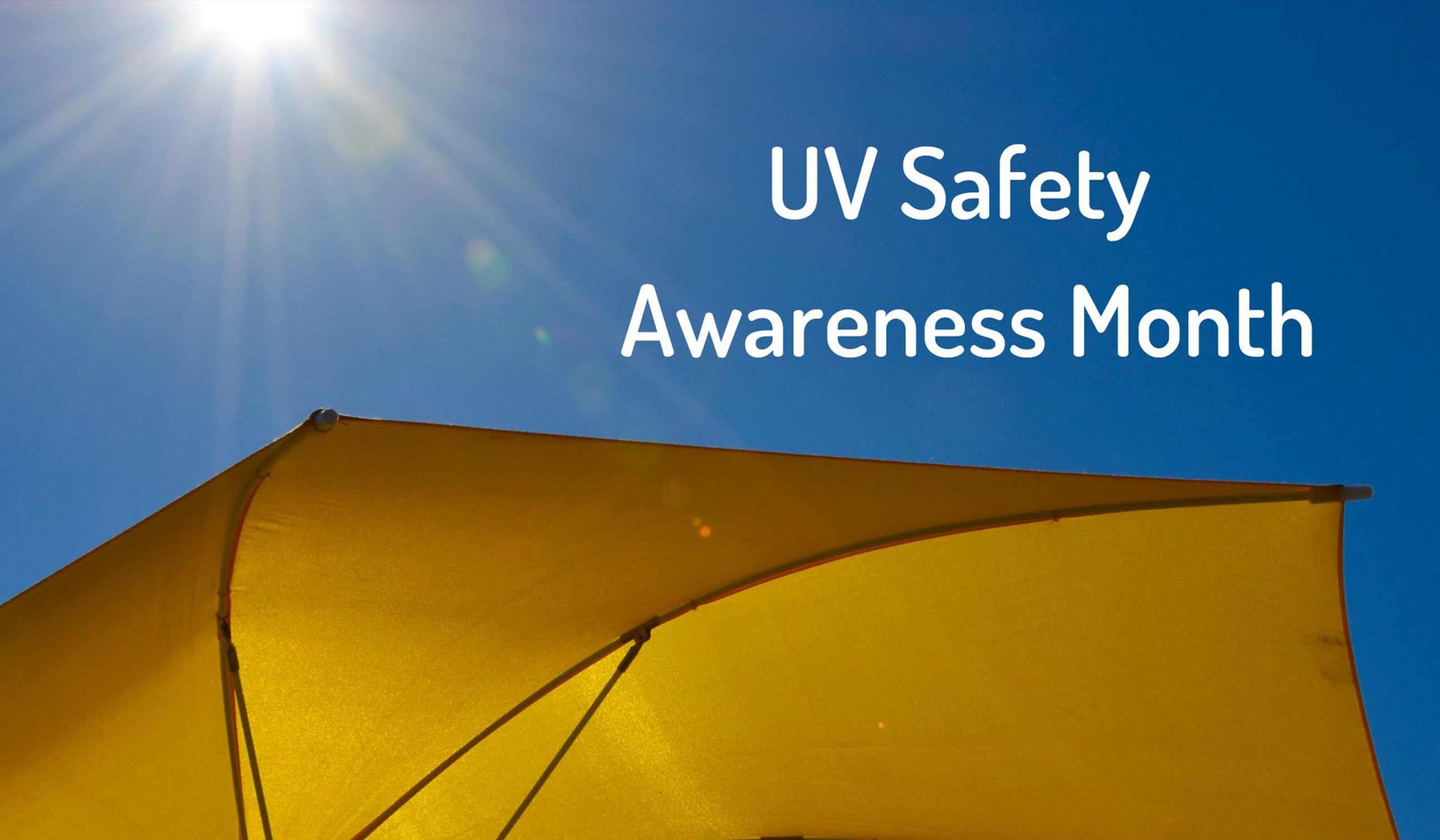
Sun Exposure Risks and Ways to Stay Safe
Many of us—especially those of us who live in colder climates—can’t wait for summer to finally arrive! It’s a great time of year to relax and enjoy the beach, picnics, and outdoor events like concerts and art fairs. It’s also easier to prioritize exercise and increase activity levels by spending more time outside. This is the perfect time of year for U.V. Safety Awareness Month to remind us of the potential risks and dangers of sun exposure, and ways to enjoy being outdoors while staying safe in the sun.
What is ultraviolet (UV) light?
There are three types of ultraviolet, or UV, light that the sun emits: U.V.A., U.V.B., and U.V.C. The ozone layer protects the Earth’s stratosphere and blocks the most damaging U.V.C. light, but U.V.B. and U.V.A. light pass through the ozone. Radiation from UV light is invisible but is always present during the day, even when you can’t see or feel the sun. UV radiation is a form of non-ionizing radiation that is emitted by the sun and also artificial sources, like tanning beds or sunlamps.
Natural source of UV radiation:
- The sun
Artificial sources of UV radiation include:
- Tanning beds
- Mercury vapor lighting (often found in stadiums and school gyms)
- Some halogen, fluorescent, and incandescent lights
- Some types of lasers
Although UV light does have some benefits including the creation of Vitamin D, it’s important to be aware of the significant health risks caused by unprotected UV exposure. UV rays can pass through clouds and can also reflect off surfaces like sand, snow, cement, and water. That’s why awareness and sun protection should be a priority in any season, in any climate, and all year round when you’re outside.
Sun exposure risks: why is protecting yourself from the sun important?
Unprotected exposure to the sun's ultraviolet rays can cause skin damage, premature aging, eye damage, immune system suppression, and skin cancer. Additionally, some oral and topical medicines, such as antibiotics, birth control pills, and benzoyl peroxide products, as well as some cosmetics, may increase skin and eye sensitivity to UV rays.
If you’re unprotected from the sun, the longer your exposure, the greater your risk of sun damage caused by radiation in the form of light. Radiation from UV light is invisible but is always present during the day, even when you can’t see or feel the sun. Aside from wrinkles and sunburn, which people commonly associate with the sun, exposure is the most common cause in the development of skin cancer and can also be harmful to our eyes. According to the Cleveland Clinic, more than 90% of skin cancers are caused by sun exposure. Cumulative sun exposure causes mainly basal cell and squamous cell skin cancer, and episodes of severe sunburns, usually before age 18, can raise the risk of developing melanoma. Additionally, cumulative long-term exposure to solar radiation increases your risk for a number of eye diseases, with the most common being macular degeneration and cataracts, but vision loss, cancer, and eye growths are also possible.
How can you stay safe in the sun?
Here are the top tips for protecting yourself from sun exposure:
- The CDC recommends using a broad-spectrum sunscreen with a minimum Sun Protection Factor (SPF) of 15 before heading outside for daily activities, and an SPF of 30–50 to be used when spending longer time outdoors.
- Broad-spectrum means it can protect you from both U.V.A. rays that cause sunburn and U.V.B. rays that cause skin damage like skin aging.
- The SPF number tells you how long the sun’s UV rays would take to darken your skin versus the amount of time without any sunscreen.
- Sunscreen is not recommended for babies who are 6 months old or younger. The Food and Drug Administration recommends keeping infants out of the sun during midday and using protective clothing if they have to be in the sun.
- Head indoors, or stay in the shade during peak times, whenever possible.
- The sun is at its peak with the most harmful UV rays between 10:00 a.m. and 4:00 p.m.
- If you are working outside, schedule breaks in the shade, and reapply sunscreen throughout your shift.
- Wear a wide brimmed hat to shade your face, head, ears, and neck when spending time outside.
- Avoid straw hats with holes that let sunlight through. A darker hat may offer more UV protection.
- If you wear a baseball cap, you should also protect your ears and the back of your neck by wearing clothing that covers those areas, using sunscreen, or staying in the shade.
- Wear sunglasses.
- Not all sunglasses are created equal. Wrap-around or oversized styles offer more protection, but make sure they block 99% to 100% of UV rays.
- Wear breathable clothing that covers your arms and legs for maximum protection.
- Clothes labeled with Ultraviolet Protection Factor, or U.P.F., provide a level of certainty but can be expensive. Common fabrics like cotton, linen, and denim that cover most of your body can offer some protection as well.
- Darker and more vivid colors absorb more UV light than pale colors, making harmful rays less likely to reach your skin.
- Avoid indoor tanning.
- Indoor tanning is particularly dangerous for younger users; people who begin indoor tanning during adolescence or early adulthood have a higher risk of developing melanoma.
By taking the recommended precautions, you can enjoy being outdoors and avoid the dangers of sun exposure, including sunburn. Sunburns often go away on their own within a few days up to a week. If you have severe blistering, dehydration, shivers, nausea, or fever, you should be sure to contact your doctor or health care provider for treatment.
